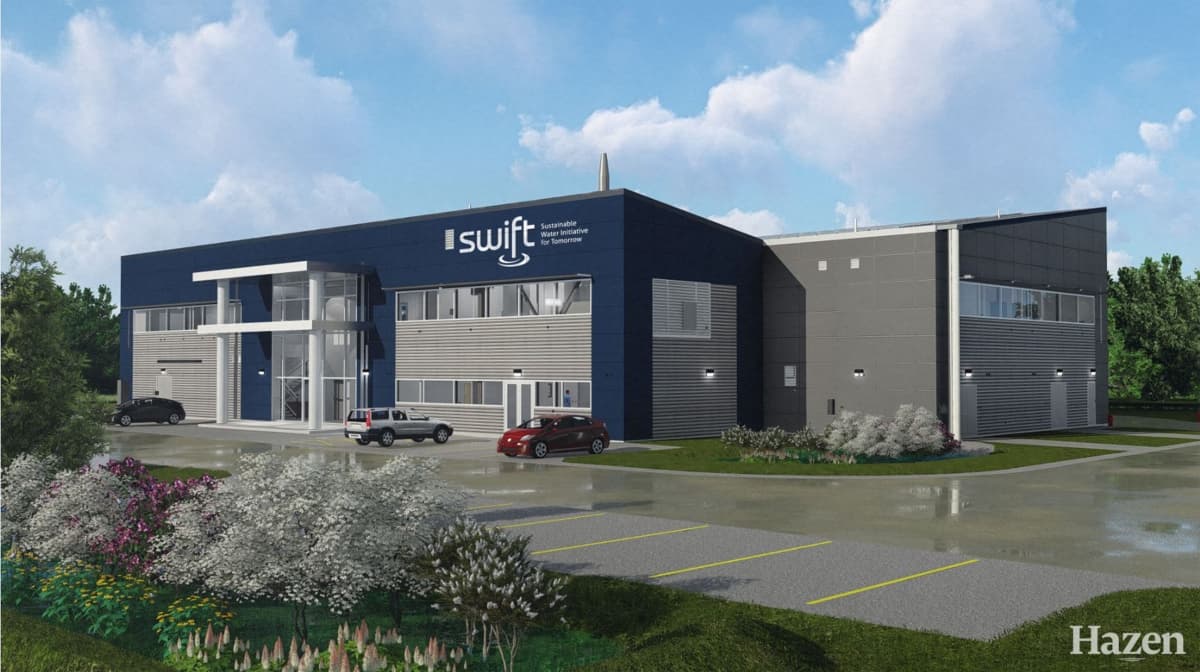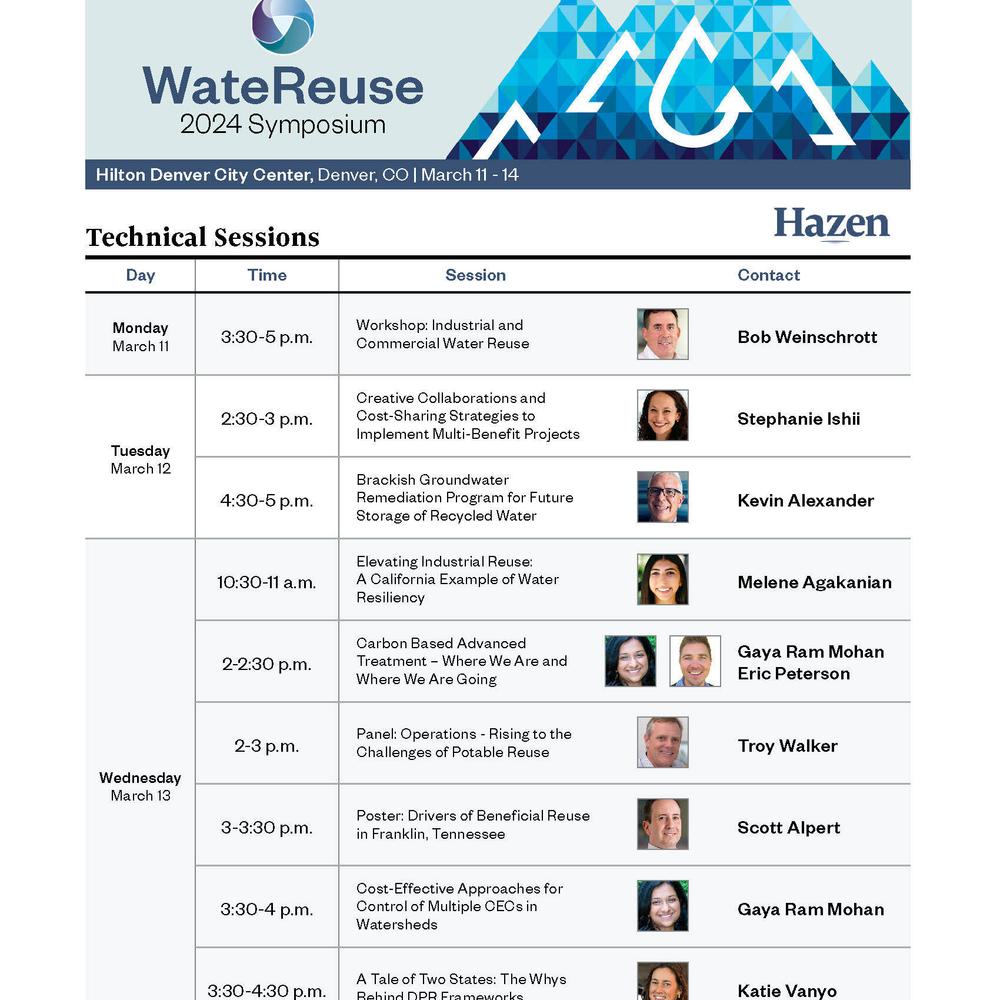Bridging the Gap Between BIM Data and CMMS for an Advanced Water Treatment Research Facility
Last Modified Sep 30, 2024
The water industry has historically had a separation of the lifecycle phases of facilities with distinct design, build, operate and maintain phases that most often have not resulted in the seamless transfer of data from one phase to the next. A combination of the development of design software, well developed BIM standards at the onset of a project, simplified data entry software and interoperability with maintenance management systems, allows for efficient transfer of data for the lifecycle of a facility.
Hampton Roads Sanitation District (HRSD) and Hazen and Sawyer present a case study of the development of HRSD’s BIM Guidelines to be utilized by Consultants, creating an Intelligent BIM containing operations and maintenance (O&M) data for the Sustainable Water Initiative for Tomorrow (SWIFT) Research Center, and the process of connecting that data with HRSD’s Computerized Maintenance Management System (CMMS) system. HRSD is on the forefront of leveraging available technologies now to prepare for the 4th industrial revolution with artificial intelligence, machine learning, IoT, transforming operations to be more efficient and cost effective.
About HRSD
HRSD serves the Hampton Roads, Virginia region under its mission to protect public health and the waters of Hampton Roads by treating wastewater effectively in order to fulfill the agency vision that future generations will inherit clean waterways and be able to keep them clean. As a political subdivision of the Commonwealth of Virginia established by referendum in 1940, HRSD currently serves a population of 1.7 million people within 18 counties and cities and treats up to 249 million gallons of wastewater per day.
Related Topics:
Innovative SWIFT Research Center
The SWIFT Research Center represents a critical step toward meeting future regulatory requirements by advancing the conceptual development of HRSD’s Full-scale SWIFT program. The SWIFT Research Center includes a 1 mgd advanced water treatment facility that provides a platform for research, public outreach, and operator training. The facility is operating and will collect 18 months of water treatment operating performance data and aquifer recharge hydraulic response data that will form the basis for completing future phases of the program.
SWIFT Full-scale Implementation
Hazen and Sawyer as part of the Program Management team is providing technical design services for the full-scale implementation of the Sustainable Water Initiative for Tomorrow (SWIFT) for HRSD in southeastern Virginia. Five SWIFT advanced treatment facilities will be built at existing HRSD water reclamation facilities for a total of $1 billion. The facilities will use an eight-step, carbon-based advanced treatment process to further treat up to 100 mgd of highly treated wastewater to meet drinking water quality standards. That water, known as SWIFT Water, will be pumped into the Potomac Aquifer to help replenish shrinking groundwater levels supplies due to over-withdrawal and limited natural recharge. Recharging the Potomac Aquifer also has the potential to slow or stop land subsidence which will reduce the effects of relative sea level rise.
Why BIM Guidelines and CMMS connectivity were developed
The large-scale capital improvements necessitate standardization of practices for design utilizing BIM and accurately capturing asset information in support of HRSD’s operations and maintenance program. The development of BIM Guidelines provide HRSD staff and Consultants the ability to utilize consistent methods in the development of BIM Models and proper integration of Facility Asset Data. The Guidelines are intended to provide a common framework for BIM users while allowing flexibility to best leverage existing HRSD and Consultant preferences. BIM Models were developed utilizing the BIM Guidelines and a user provided BIM Execution Plan.
The BIM Guidelines provide guidance in the following key areas:
- Establish goals for the HRSD program and establish the software package and release requirements.
- Level of Detail/Development (LOD) Tables provide guidance on the appropriate amount of detail for each discipline in the BIM Model throughout the various project design milestones.
- Provide the expected level of worksharing in the BIM Model and establish requirements for worksets.
- Provide guidance on the use of Templates including items such as; procedures for tables and schedules, requirements for annotation and use of tags, project base point and orientation and Revit model linking.
- Provide guidance on Mechanical Model best practices, includes pipe types, mechanical family requirements, and table of parameters required for inclusion of HRSD Equipment Data information.
- Provide guidance on discipline model best practices.
- Provide guidance on family naming convention and family level of detail.
- EXPORTING – provides requirements for exporting content to other formats as required for the use of HRSD.
- BIM EXECUTION PLAN – provides requirement for Consultants to prepare and submit a BIM Execution Plan for each project. Provides guidance for the content to be provided within the Execution Plan.
Development of an intelligent Building Information Modeling (BIM) model for the SWIFT Research Center with HRSD standard Project Templates and a selection of a bridging software to connect BIM data to CMMS allows consistency in format and presentation developed by varied stakeholders. The development of BIM Project Templates was provided by Hazen for HRSD to develop model elements such as templates, families, parameters and content to utilize consistent methods in the development of BIM Models and proper integration of Facility Data. Selection of a bridging software to connect BIM data to HRSD’s Computerized Maintenance Management System (CMMS) allows HRSD to facilitate the integration of BIM and CMMS equipment data.
Asset attributes are then populated for the existing SWIFT Research Center BIM model with extensive equipment data, operation and preventative maintenance requirements. The bridging software is utilized to allow export/import between CMMS (Infor EAM) and BIM (Revit) using the following steps:
- Unique asset identifiers are assigned in CMMS and synchronize equipment O&M data
- Publish BIM parameters to bridging software
- Utilize CMMS bridge to assign unique asset identifiers as currently designated in CMMS
- Export to excel from bridging software
- Merge data with Infor EAM data
- Bridging software import from Excel
- Synchronize equipment data parameters to Revit
The selected bridging software allows Operation and Maintenance views to be created. The power of visualization in the O&M stage is not just in the design and construction stages where we typically see the value of BIM. GIS has evolved from a planning and design tool to a day-to-day operational tool. HRSD needs a similar visual tool for their treatment plant operators to navigate to an asset, operate it, maintain it, capture information, review attributes (age, size, capacity, etc) just like our interceptor operators have today through the use of GIS.
The development of a comprehensive set of guidelines and standard practices by HRSD for use by their Consultants and Contractors streamlines the collection of asset information which improves future capital planning, operation and maintenance for this large utility. Future facilities will be developed using this innovative approach developed and implemented for the SWIFT Research Center. Ultimately, having the Intelligent BIM opens the door for any future use that HRSD can think of today or the unthinkable to truly meet not only their mission but their vision by providing the tools for future generations to keep the waterways clean.










